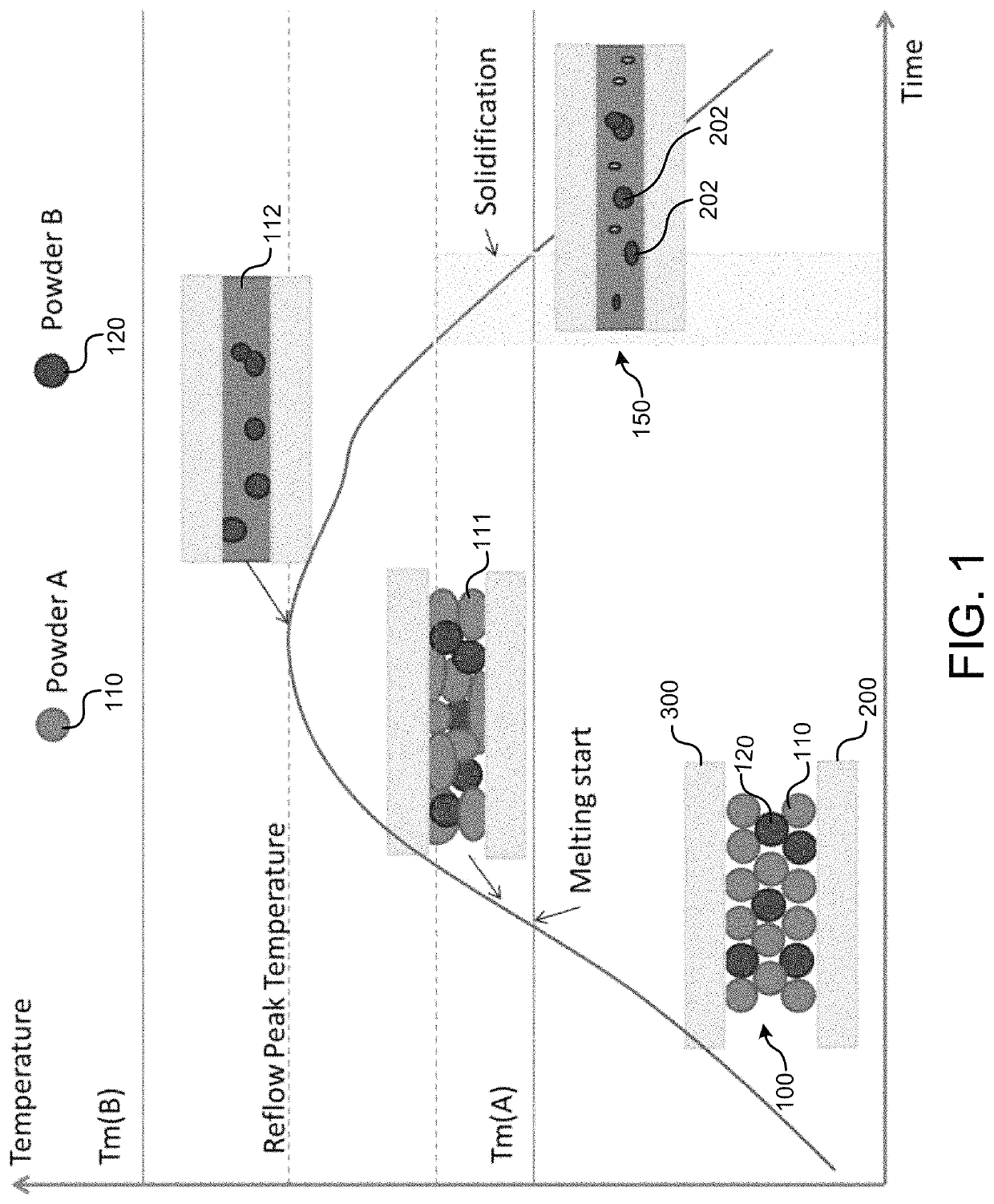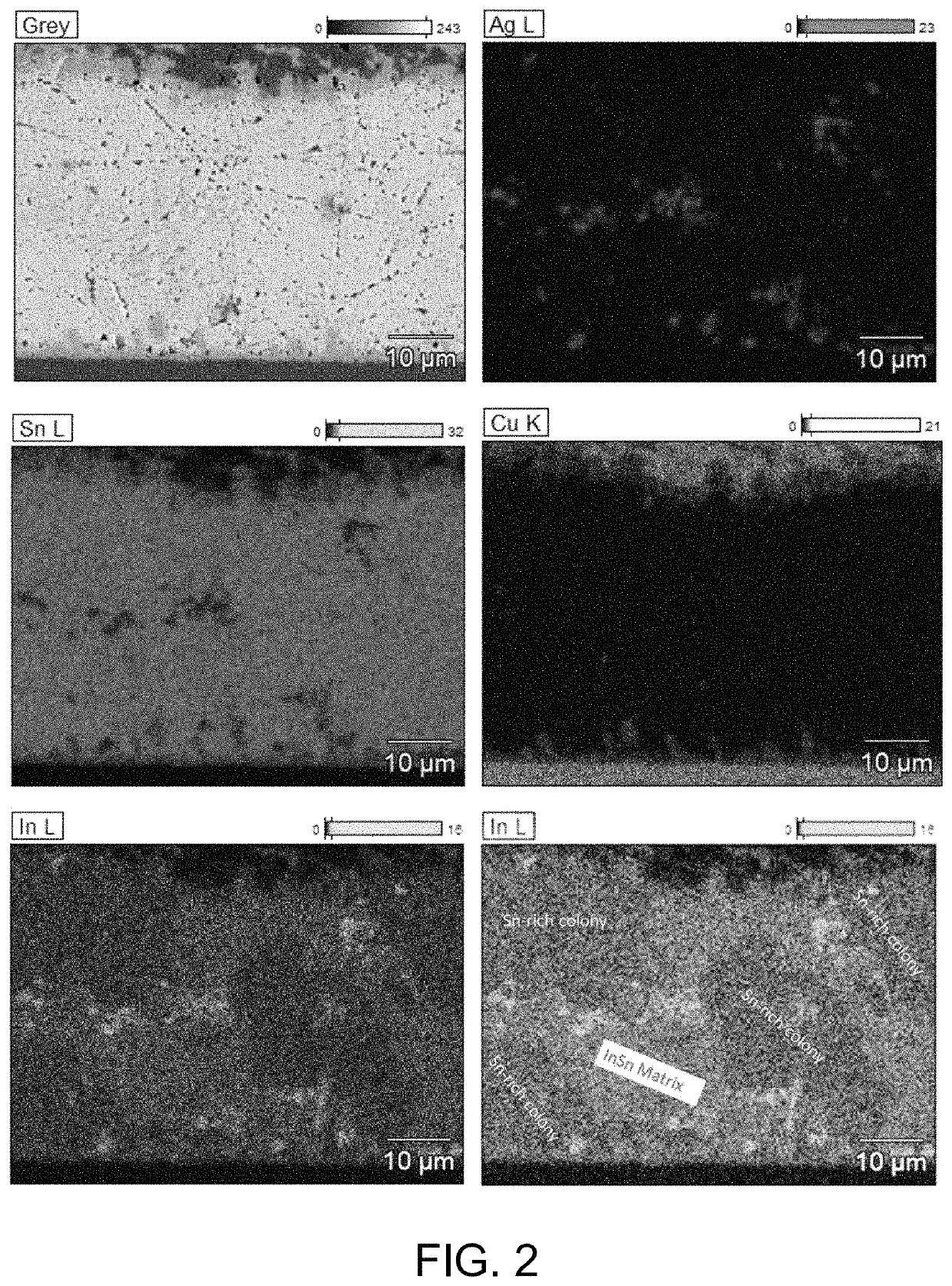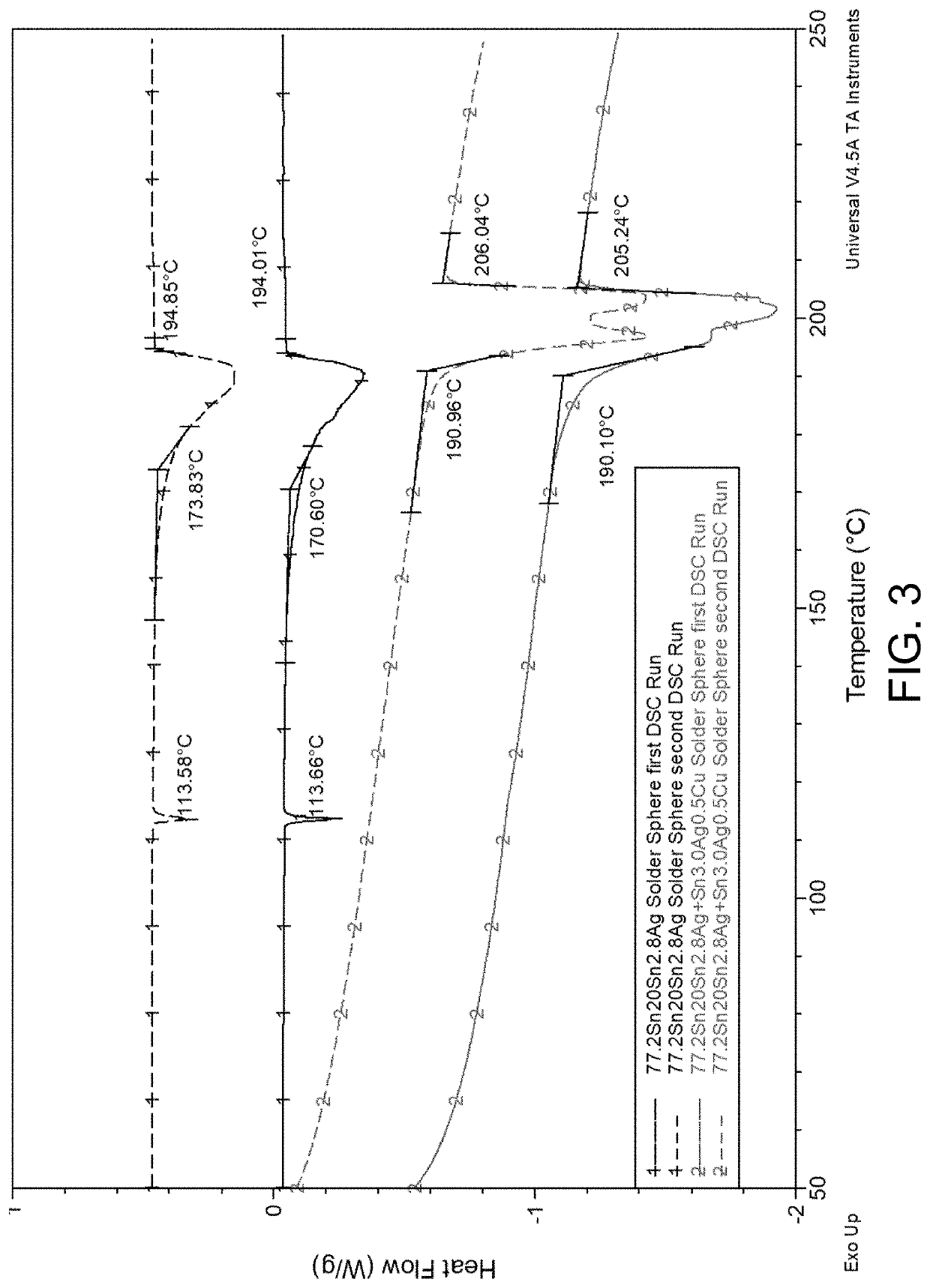Low temperature melting and mid temperature melting lead-free solder paste with mixed solder alloy powders
a technology of alloy powders and low temperature melting, which is applied in the direction of welding/cutting media/materials, manufacturing tools, and soldering apparatus, etc., can solve the problems that the melting temperature of eutectic bi—sn and near-eutectic bi—sn modified alloys are brittle in nature, and the melting temperature of these two alloys may be too low to allow both alloy systems, so as to achieve significant changes in composition and increase sn conten
- Summary
- Abstract
- Description
- Claims
- Application Information
AI Technical Summary
Benefits of technology
Problems solved by technology
Method used
Image
Examples
Embodiment Construction
[0005]Implementations of the disclosure are directed to a lead-free mixed solder powder paste suitable for low temperature to middle temperature soldering applications. The solder paste may include at least two solder powder alloys having significantly different solidus temperatures. The solder paste may be designed for reflow at a peak temperature below the solidus temperature of solder powder having the higher solidus temperature but above the melting temperature of the lower one.
[0006]The lead-free mixed solder powder paste described herein may address the need for reliable low melting temperature and middle melting temperature solders, including ones that are strong and ductile. For example, lower melting temperature solders of eutectic Sn—In and modifications thereof, Bi—Sn and modifications thereof, Sn—In—Ag, and Bi—Sn—Ag may be mixed with Sn-rich (e.g., SnAg, SnCu, SnAgCu, SnSb, etc.) solder alloys and modifications thereof to form the solder paste. During reflow, the lower m...
PUM
| Property | Measurement | Unit |
|---|---|---|
| melting temperature | aaaaa | aaaaa |
| solidus temperature | aaaaa | aaaaa |
| solidus temperature | aaaaa | aaaaa |
Abstract
Description
Claims
Application Information
 Login to View More
Login to View More - R&D
- Intellectual Property
- Life Sciences
- Materials
- Tech Scout
- Unparalleled Data Quality
- Higher Quality Content
- 60% Fewer Hallucinations
Browse by: Latest US Patents, China's latest patents, Technical Efficacy Thesaurus, Application Domain, Technology Topic, Popular Technical Reports.
© 2025 PatSnap. All rights reserved.Legal|Privacy policy|Modern Slavery Act Transparency Statement|Sitemap|About US| Contact US: help@patsnap.com



